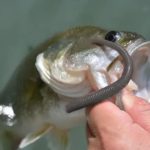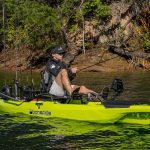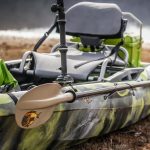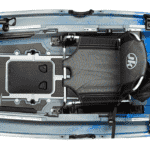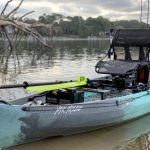The wacky rig has become a very popular way to catch bass. In this article you’ll learn which lures, setups, and techniques work best for the wacky rig.
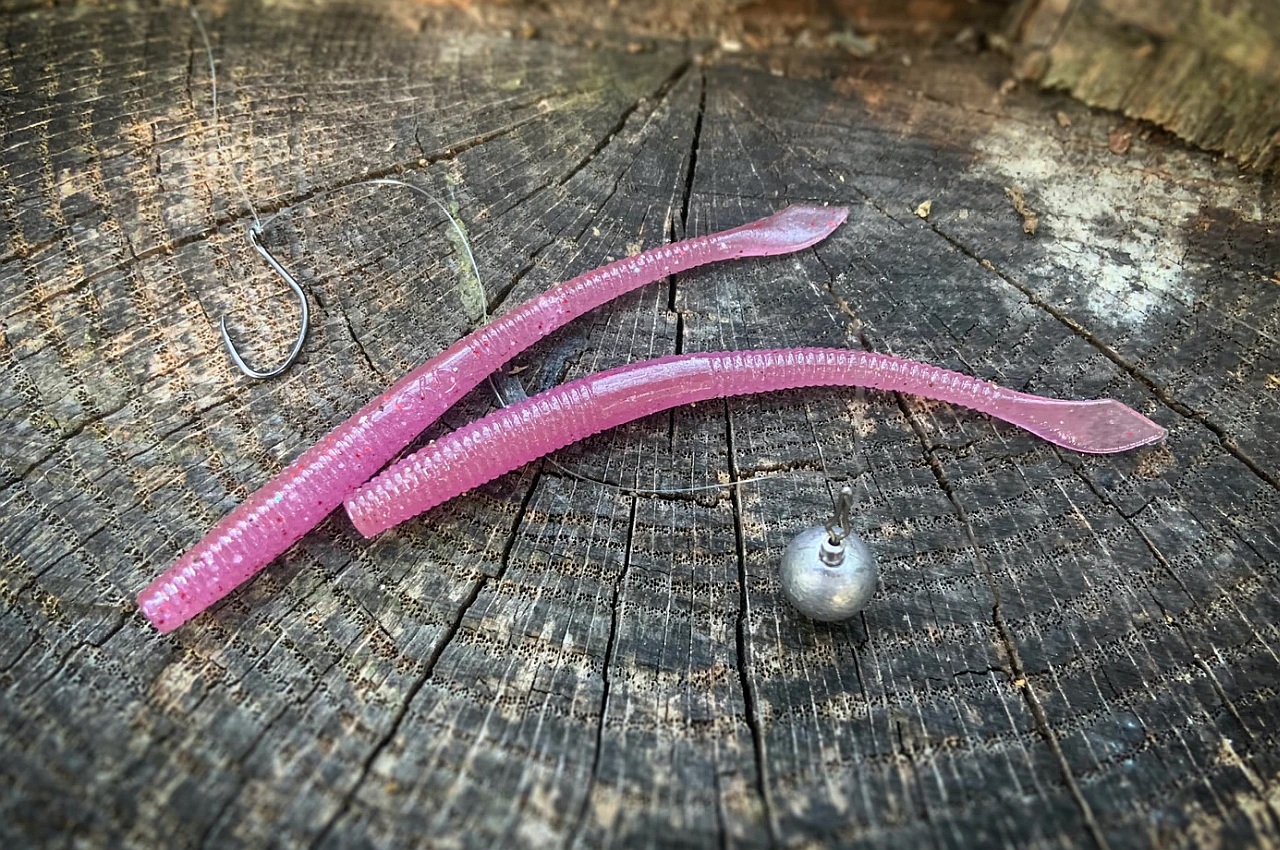
When bass fishing, few rigs can compete with the drop shot rig. Thanks to its versatility, ease of use, and effectiveness, the drop shot rig has become one of the most important rigs in an angler’s arsenal. Knowing how to properly set up and fish these rigs can be the key to success year round when more classic setups like the Carolina rig or Texas rig fail to produce.
What is a Drop Shot Rig?
Drop shot rigs are basically a line tied to a hook with a long tag end dropping down to a weight. This allows a bait to be lifted off of the bottom and put right in front of suspended fish.
Various soft plastic baits, lines, and hook combinations can be used when drop shotting, making this rig extremely versatile.
How to Tie a Drop Shot
Though there are multiple ways to tie a drop shot rig, most anglers prefer using a palomar knot.
The reason this knot is so popular is that it allows hooks to be tied perpendicular to the leader while taking advantage of the tag end to use for a drop shot weight.
In its simplest form, a drop shot weight can be tied directly to the tip of the tag end with simple knots like the clinch knot. However, specialty drop shot weights are sold to be adjustable.
To avoid having these weights slip down the leader, I like to tie a simple overhand knot in the tag end to act as a weight stop. This allows me to adjust the depth of my drop shot rig and put the bait right in front of fish.
Finally, the length of the tag end is an important factor to consider. Having the bait too close to the weight may spook fish, so having the weight at least a foot from the hook is a good place to start.
Drop Shot Rig Setup
Versatility is the name of the game with drop shot fishing. You can use a wide variety of soft plastics and hooking techniques when bass fishing this way. Since it takes some finesse, I stick with lighter lines in the 6-8lb test range.
Bait Selection
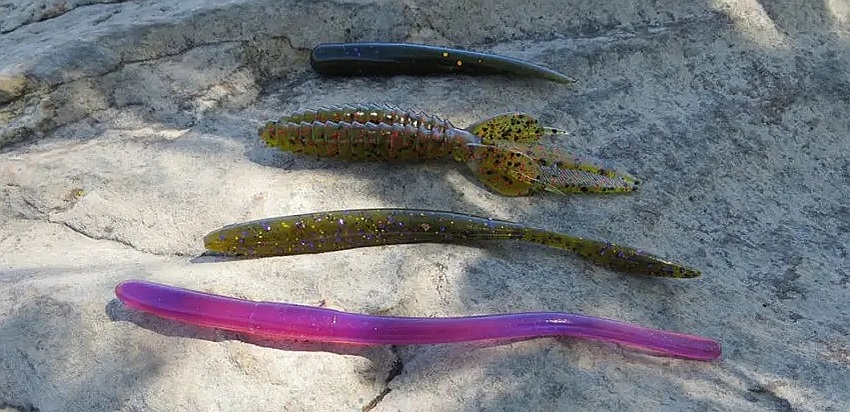
Most styles of soft plastic baits work well when drop shot fishing. Jerk shad of various designs, split tails, worms, and even lizards can be effective for bass. Try to avoid oversized baits however. These can create unnecessary drag and tend to look unnatural when rigged this way.
Hooking Techniques
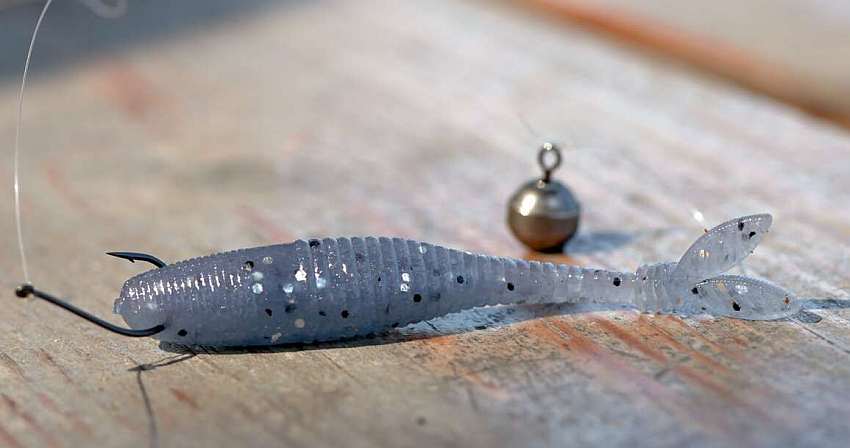
Since the weight is separated from the bait, I like to nose hook soft plastic jerkbaits in order to give them a more realistic presentation. If fishing around weeds and debris, these rigs can also be hooked weedless.
Wacky rigging is another popular option when drop shot fishing. Simply choose your favorite style of wacky worm and take advantage of this unique finesse technique to target monster bass and finicky fish.
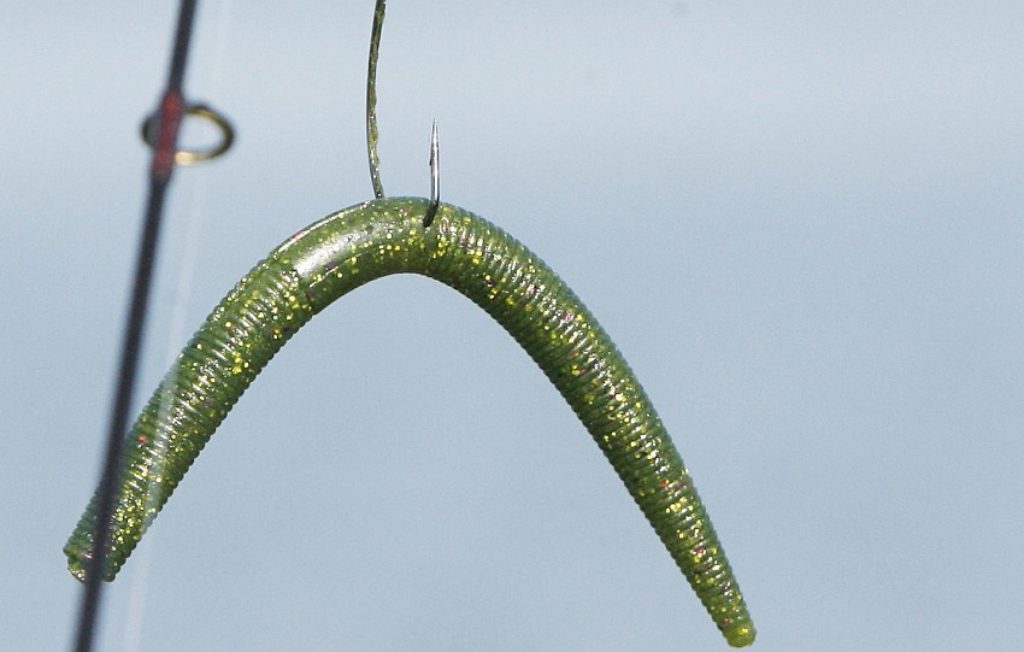
Drop Shot Baits That are Proven Winners
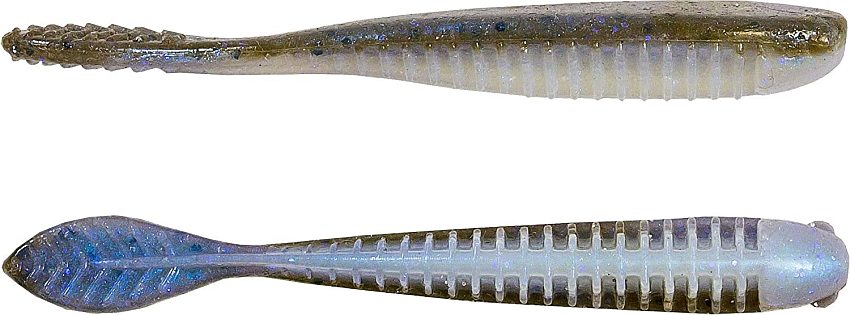
Since you can almost fish any soft plastic when drop shotting, the bait choice can be a little overwhelming.
My personal favorites are the Zoom Salty Super Flukes in Green Pumpkin and the ZMan Finesse Shads in Pearl. These styles of soft plastic bait are easy to rig and provide fantastic action underwater. Other popular options include:
Drop Shot Hooks to Get Better Landing Percentage
One of the advantages to drop shot rigs is the wide variety of hooks that an angler can use l depending on the situation.
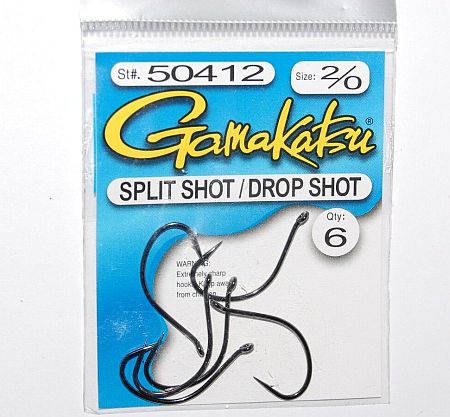
Companies like Gamakatsu put out wide gap, extra wide gap (EWG), weedless, and even specialty a drop shot hook that come with built in swivels to avoid line twisting. These wider gapped drop shot hooks are ideal for this method of fishing as they allow the bait to collapse further during a fish bite and prevent baits from sliding.
As with any hook selection, the hooks should fit the size of the bait being used. For most of your 4″-5″ soft plastics, a 1 to 1/0 hook size should fit perfectly.
Drop Shot Rods to Increase Your Odds
Sensitivity is key when selecting a rod specifically for drop shot fishing. Fast and even extra fast rods in medium to medium light give an angler the necessary feel when finesse fishing this method.
Spinning rods tend to be the dominant rod style when drop shotting as it can be easier to feel a lighter weight bouncing across the bottom. Keep in mind that most drop shot specific rods are in the 6”6-7’ range (with a few outliers).
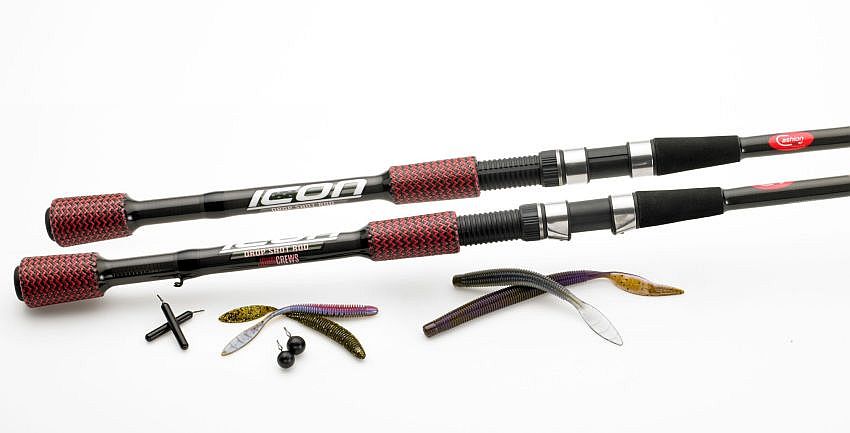
Take into consideration the rod tip when selecting a rod. You want it to be fast enough to give a weighted rig like a drop shot plenty of action, yet soft enough to actually feel when a bass bites. Many companies make lightweight rods like these specifically for drop shot rig fishing.
As with any rod selection, I always suggest getting your hands on one in person rather than just ordering blindly online. Your local tackle shop may not have the brand specific rod that you had your heart set on, but chances are they have the equivalent.
Getting the feel for a rod in person can help you determine exactly what you’ll need to have success with a drop shot rig.
With that said, there are several popular options that manufacturers have specifically designed for drop shot fishing:
- G. Loomis NRX+ Drop Shot
- Diawa Tatula Elite AGS
- Enigma HPT Gen 3 Series Drop Shot
- Castaway Invicta II Drop Shot
Drop Shot Weights for Various Applications
There are a few different styles of weights that work well for bass fishing when using a drop shot rig. These varying shapes/sizes are all designed with subsurface conditions in mind. Though they range from ⅛ oz up to ½ oz, I prefer to stick within 3/16 oz to ¼ oz.
Cylinder Weight (Skinny)
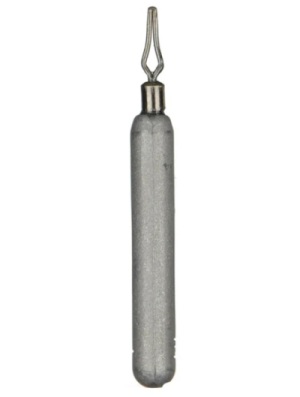
These weights are cylindrical shaped, often with the pinch-style clip at the top. This skinny profile allows the weight to slip easily through debris like rocks, weeds, or any odd structure that might be on the lake bottom.
Tear Drop Weight
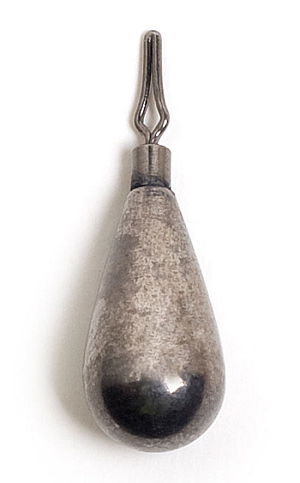
This style weight features a general “tear drop” shape that resembles your more traditional bass casting sinker. These weights have a larger surface area profile meaning that they make more contact with the bottom and thus, an easier feel.
Round “Ball” Weight
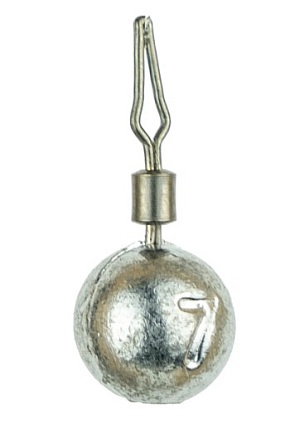
Round weights tend to be the perfect mixture of the skinny weights and teardrop weights. Their larger surface area helps with feeling contact on the bottom, and their slightly smaller design means they aren’t as noticeable to spooky bass as the teardrops.
Weight Variations
Like with most things in the fishing world, these weights come with variations. In their simplest form, a drop shot weight has a metal ring at the top and is tied directly to the line. Or a split shot is used and crimped onto the fishing line.
The issue with this is that there’s no quick way to adjust the depth of the rig, and if the weight gets snagged on the bottom, there’s a good chance you may break off the bait and hook along with it.
To combat this, I recommend using drop shot weights with wire clips at the top. These simply clip onto the line, making changing depth a breeze.
Also, in the event that the weight gets snagged, they’re designed to break off. This means only having to replace a single weight rather than re-rigging.
If twisted line becomes an issue, some weights come with built in swivels on the line clip like these from Omega Custom Tackle.
And finally, if getting your bait to the bottom quickly is your priority, most companies offer tungsten weights.
How to Fish a Drop Shot Rig: Techniques and Tips
The two primary methods of drop shot fishing for bass are dragging and vertical fishing. Though both methods can be done from shore or dock, ideally these are fished from a boat.
Dragging
To start, I like to make sure my leader is about a foot long. Dragging requires actually casting the rig and if the distance from the hook to the bait is too great, it can be a pain to cast.
After casting, watch the line as the bait begins to sink. You’ll notice the weight has hit the bottom when the line stops moving.
Slowly begin reeling and start to drag the weight across the bottom. It’s ok if it leaves the bottom briefly, but try to keep it down there. Occasionally give the line a twitch, ensuring you have tension on the line in anticipation of the hook set.
This is where the sensitive tip of the rod comes in handy. You should be able to feel the bottom throughout the entirety of the retrieve. If you cannot, try a heavier weight or one with a larger profile.
It’s important to understand how the bottom profile changes as you reel in. If you’re casting up into shallow water, you will need to slow your retrieve as the rig is pulled into deep water.
Too much speed and your bait will be suspended in the water column and go right over the heads of most bass.
Vertical Fishing
As the name implies, vertical fishing for bass means that the line is straight up and down below you. This is typically done in deep water with heavy rigs and a jigging motion.
Start by dropping or merely flipping your line right in front of you. I like to loosely hold my hand in a “claw” grip over my spool as the line peels out to avoid birds nests.
It’s obvious when the bait has hit the bottom with this method of fishing. Once you’re on the bottom, it’s time to start fishing.
This method can be great to figure out what depth bass are holding. Try jigging right on the bottom, ensuring that you can feel the weight each time the bait is dropped.
After a few moments, reel the line in a couple of cranks. Stop, and jig again. Continue this until you start to catch fish. Once you do, you’ll have a better idea of how deep in the water column the bass are suspended in.
When to Use a Drop Shot Rig
Like any finesse style of fishing, the drop shot shines in tough fishing conditions where fish are reluctant to feed. The nice thing about this bass fishing method is that it can be done year round and in almost all conditions.
In sunny, clear water conditions, bass may be reluctant to fully commit to feeding. If you notice you’re getting bumps but no hook ups, they may be short striking. Longer leaders will be your friends here as chances are, the bass are being shy about the weight.
I prefer to use fluorocarbon in clear water conditions thanks to its invisibility and abrasion resistance. But what if you’re already rigged up with monofilament or braided line on your reel?
This is where simply tying a fluorocarbon leader can come in handy. A double surgeon’s knot or double uni knot works great when adding fluorocarbon leader to a main line:
If your soft plastic bait of choice isn’t working, try mixing up colors and sizes until you start getting hook ups. Don’t be afraid to try wacky rigging a senko style worm in these clear conditions either.
In muddy, dark water conditions, try bumping up a size in the bait and choosing a darker color. Since the bass can’t see as well, you can get away with heavier weights and even braided line in order to pull bass out of cover.
FAQ
The drop shot rig can be extremely effective for bass fishing. This style works great in difficult conditions and when fish are suspended in the water column.
Though they can be fished from a dock or shore, drop shot rigs are ideally fished from a boat. As for bodies of water, they can be fished in almost any lake, pond, or even river.
Absolutely! This method is great for getting baits down deep to where bigger fish like to hang out. Even though it’s recommended to use lighter lines with these rigs, if you play them properly, big fish can definitely be caught.

